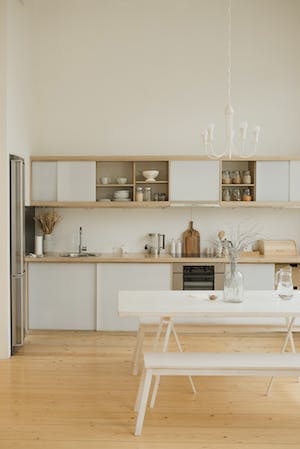What is Interior Design?
by siteadmin

Interior design is a term used to describe the planning and creation of interior spaces. It includes everything from the planning of the architecture, colors, and design materials of the space, to their completion.
Interior design is about more than aesthetics. It's about creating an environment which meets environmental, accessibility and safety requirements while still being functional and pleasant to its inhabitants. Certified interior designers have a variety of obligations, such as continuing education requirements. They must also adhere to all local laws.
It is an art and science to improve the interior environment.
Interior design is a science and art of optimizing the interior environment in order to promote health, comfort and aesthetic appeal. This work involves planning, research and coordination.
Interior designers are well-versed in human needs and behavior. They also have an extensive knowledge of ergonomics (the study and analysis of movement), material properties, performance and economics.
Interior designers are employed in a wide range of environments including residential, commercial and healthcare settings, as well as universal design exhibitions, spatial branding, and hospitality. All of these industries require specialized knowledge and technical expertise.
It is a process of planning, executing and designing interior spaces.
An interior space designed and created by an experienced designer should have both aesthetic value and functionality. An experienced interior designer will optimize a space in a way that it serves the intended purpose and meets their client's requirements.
Success is dependent on the success of all project stakeholders. This includes concept development, space planning and site inspections. Understanding the applicable building codes, regulations, or standards is crucial.
Interior architects draw up detailed plans for the spaces they intend to design. These plans not only showcase aesthetic features of their creation, but they can also include structural components like electrical wiring, plumbing lines, heating/air-conditioning systems etc.
Interior design is an artistic process that considers a number of factors such as user behavior, comfort conditions and ergonomics. It also takes into consideration the specifications and materials used for coatings and finishes.
It is a combination of form and function.
Combining function with form is one of interior designers and architects' oldest and most difficult challenges. When designing any room, be it for commercial or domestic use, you must consider factors such as space planning, material choice and lighting and fixtures choices.
Professionals are increasingly focusing their efforts on creating "liveable environments" that meet the requirements of people of all ages, abilities and budgets. This work can range anywhere from renovating an existing space to building a brand new structure from scratch.
People who are interested in this field can enroll in accredited degree programs at colleges or universities that offer the right training. Graduate and Ph.D. design programs also provide valuable career-enhancing information.
It is a way of bringing aesthetics into everyday life.
The new branch of philosophy, "Applying aesthetics to everyday living", explores how everyday objects, habits and experiences can be part of or contribute to an aesthetic experience. Examples of aesthetic experiences include the Japanese tea ceremony and hanging your laundry.
The aesthetic theory traditionally has focused on the three objective senses of vision, touch and hearing. Although these senses are essential to understanding our environment, smell and taste also play a key role.
In the modern age, visual and auditory stimulations have been significantly reduced in importance due to Kant’s and Descartes’ philosophical perspectives that link them with the cognition of external things. Nietzsche and Hegel emphasized the importance of smell and taste, which they considered subjective pleasures and also contributed to the perception external reality.
https://www.editdesignhouse.com/
Interior design is a term used to describe the planning and creation of interior spaces. It includes everything from the planning of the architecture, colors, and design materials of the space, to their completion. Interior design is about more than aesthetics. It's about creating an environment which meets environmental, accessibility and safety requirements while still…
Recent Posts
- Utah Disasters: Rebuilding Together
- Mighty Metal Inc. Unveils Revolutionary Custom Steel Pergolas and Awnings in Utah
- Mighty Metal Inc. Unveils Revolutionary Custom Steel Pergolas and Awnings in Utah
- I AM Salon: Premium Grooming Experience in St. George with Grand Opening of State-of-the-Art Barber Shop
- The Essence of Greenland Lawn Care & Landscaping in Utah County
